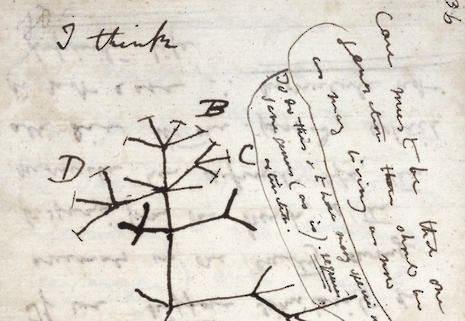Gendered scientific research reinforces our sexist stereotypes
Second in our series on science and gender, Bethan Clark explores the impact of stereotypes and prejudices on scientific study

We like to idealise science as an objective enquiry, independent of politics, religion, race, class, or gender. In reality, all of these aspects are inseparable from science. Specifically in the case of gender, scientists’ biases have often affected research, showing just how pervasive and powerful society’s prejudices can be.
Gendered research comes in two types. The more straightforward of the two is in the research outcomes. The conclusions scientists draw from research are easily swayed by their own assumptions, picked up from society. Historically, these have legitimised the view that women’s subordination was the result of nature rather than culture.
Ironically, science’s power in legitimising this view resides in the idealisation of it as an objective, values-free enquiry. An example from the Victorian era illustrates this precisely. Using Darwin’s theories of evolution, scientists concluded that the physical and mental characteristics that Victorians viewed as typically male or female were the result of natural selection. Darwin himself applied the process of sexual selection to the differences between men and women to make similarly biased conclusions. He inferred that the strongest and most intellectual men would breed successfully, while women would be selected only on the basis of attractiveness. In historical examples like this, the social biases and their influence are outlandish and so easily identifiable. Their impact on scientific theory is clear to see. However, this doesn’t mean that such effects are merely historical artefacts. The same process happens just as easily today – it’s simply more likely to slip under the radar. The pervasive nature of social biases lends them a certain degree of invisibility at the time.
Trickier to spot, and with more insidious effects, the second way research is gendered lies in its focus. What gets studied, and how it is framed, plays a huge role in reinforcing the way in which society views women. Nowhere is this more apparent than in the field of reproduction. Throughout history, female bodies have been regarded as pathological, in comparison to the assumed norm of the male form. The obvious effect of this is the vast array of theories about women’s reproductive health - some more ridiculous than others from today’s standpoint. At the extreme end: nineteenth century scientists claimed that women’s reproductive organs had a disturbing effect on the brain. To add another layer of prejudice, this was justification for the view that women were particularly susceptible to “hysteria”.
More importantly, this view of women’s bodies as pathological has directed the focus of scientific research. Women’s bodies were seen to be in need of medical intervention in a way that men’s bodies simply were not. This view is now deeply ingrained in medicine. The result? Women’s reproductive health has become a specialty discipline. Meanwhile, male reproductive health exists under the general field of health: there is no comparable equivalent to gynaecology as a practice of its own. This has huge knock-on effects on what gets researched. For example, there is still no substantive effort to make a male contraceptive pill, even though it shows major potential. And underlying the the targeting of contraceptive research to women is this view that it is women’s bodies that are in need of intervention.
Gendered research, then, both props up existing beliefs about the place of women in society and affects the approaches to women’s medical needs. Rather than a deliberate distortion of evidence to support biased pre-conceptions, it is generally recognised as the product of particular historical and social circumstances. Simply put, society’s values are the lens through which research is interpreted. When some of those values are discriminatory, the results of research can reflect that.
This is not a reason to be disheartened or defeatist. Instead, it’s a chance to approach scientific research with an open mind. We should be wary of assumptions in the practice and process of research, and critical of them when they are found. By recognising the influence of these biases and interrogating their foundations, there is an opportunity to tackle them and make lasting change
 News / Local business in trademark battle with Uni over use of ‘Cambridge’17 January 2026
News / Local business in trademark battle with Uni over use of ‘Cambridge’17 January 2026 News / Cambridge bus strikes continue into new year16 January 2026
News / Cambridge bus strikes continue into new year16 January 2026 News / Uni members slam ‘totalitarian’ recommendation to stop vet course 15 January 2026
News / Uni members slam ‘totalitarian’ recommendation to stop vet course 15 January 2026 Interviews / The Cambridge Cupid: what’s the secret to a great date?14 January 2026
Interviews / The Cambridge Cupid: what’s the secret to a great date?14 January 2026 Science / Why smart students keep failing to quit smoking15 January 2026
Science / Why smart students keep failing to quit smoking15 January 2026










